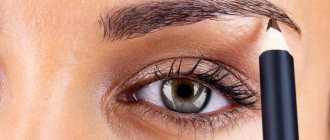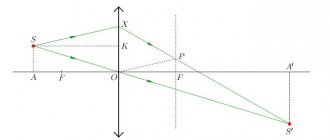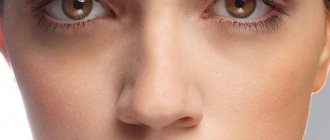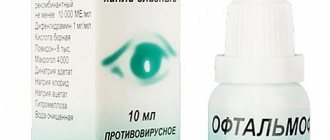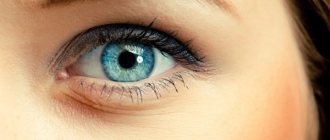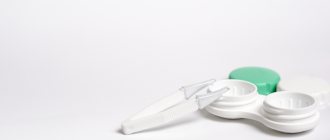HomeArticlesArticles about lensesHow to choose contact lensesFor beginners: how to choose contact lenses
Published:
Back to archive
Contact lenses are not only a reliable and effective, but also an extremely convenient way to correct vision. For the success of the correction and wearing comfort, the key step is the selection of the first lenses. Eye health and visual acuity directly depend on proper selection and further proper care of contact lenses.
Take a free express vision test and receive a pack of contact lenses as a gift.
Adaptation period
When purchasing an optical device, make sure that the packaging is intact; it should not be torn or dented. Next, make sure that the expiration date has not expired. Yes, this is not a sausage, but this indicator is no less important for eye health, the radius of curvature and the number of diopters.
Ophthalmologists recommend wearing the eyepiece for no more than one hundred and eighty minutes on the first day; after a week of use, you can leave it on your eyes for ten hours. During the adaptation period, beautiful ladies should give up false eyelashes, cosmetics with a greasy consistency and makeup. Men will have to forget about pre- and post-shave gels for a while.
In the future, contact lenses should be worn after the make-up is completed, so that particles of the product do not fall on the surface of the product. While your eyes are getting used to the new “accessory,” purchase drops that imitate human tears. They prevent the mucous membrane from drying out and relieve irritation. Instill the drug three to four times during the day (one drop at a time).
| The entire adaptation period is divided into two stages: initial and stable. At the first “level,” the eyes can “revolt” against the transparent plate, and the body’s protective functions are activated. Such unpleasant sensations as increased lacrimation, itching and burning are observed. |
However, after a certain period of time, the negative manifestations are reduced to zero, and the visual apparatus completely adapts to the “neighbor”.
Basic rules for using contact lenses:
- Hands must be thoroughly washed before contacting lenses to protect the surface of the lens, and therefore the eyes, from invisible bacteria and microparticles.
- It is better to use liquid antibacterial soap without fragrances. Bar soap gets dirty easily. Rinse off the soap well with water so that it does not get on the lenses.
- To prevent fibers and microparticles from getting on the lens, choose a towel made of smooth fabric.
- All lenses, except daily ones, must be thoroughly washed and disinfected in a special solution before putting them on.
- It is better to select a solution for them together with your ophthalmologist: not all lenses and solutions are compatible. They differ in their composition and ability to clean, disinfect and rinse lenses, however, there are also multifunctional solutions. Take care of the bottle neck and do not use the solution after the expiration date.
- Under no circumstances should lenses be over-weared. They must be used strictly in accordance with the period of use (1 day, 2 weeks, month).
- Under no circumstances should you sleep in lenses.
How to use lenses
Among the variety of assortments, you can find products that are allowed to be worn throughout the day (except at night), but ophthalmologists do not recommend leaving contact lenses for more than twelve hours. Even the most expensive and high-quality products with high throughput “deliver” less oxygen to the visual organ than necessary.
Therefore, before going to bed, be sure to remove them and place them in a special storage solution, your eyes should rest. Do not disregard manufacturers' recommendations. On the packaging they always indicate how long their products can be worn. In order not to forget about “Day X”, keep track of the date of purchase of the optics, this especially applies to long-term use lenses that require scheduled replacement.
The eyepieces should not be worn in swimming pools, saunas or baths. If your eyes are affected by an infectious or inflammatory disease, stop wearing lenses until the disease has completely resolved.
If you experience discomfort when using optics, your eyes become red and itchy, or there is a drop in visual acuity, visit an ophthalmologist as soon as possible. Girls who use lenses will have to select special cosmetics:
- They should not contain preservatives or various fragrances;
- Buy waterproof mascara and change it every three months. In this case, colored eyelashes cannot be combed; particles of the product may fall on the surface of the eyepiece;
- Skip eyeliner in favor of a soft pencil. Change the product every six months;
- Use only dry shadows for the eyelids; other cosmetics that come into contact with the lens cause rust;
- For facial skin care, buy creams with a non-greasy texture.
| If you put on your optics and the surrounding objects become blurry, make sure they are positioned exactly in the center. |
How to prepare yourself for putting on lenses?
- Stop being afraid. SCLs are not felt at all, as if they are not there, and they are easy to put on. To master this skill, practice - soon you will succeed, and all actions will become automatic.
- Take some time. At first it is difficult to limit yourself to a few minutes.
- Watch training videos. The ophthalmologist teaches patients how to put on lenses directly at the appointment, but if you have forgotten something and want to refresh your memory of some points, it will not be a bad idea to watch video tutorials. This video is available on the Acuvue website.
How to put on lenses correctly
Before putting on the product, wash your hands thoroughly with soap and dry them. To remove the optics from the blister, it is better to use tweezers. Place the CL on your index finger and make a visual inspection to make sure it has not turned out.
Pull back your eyelid and insert the lens. In this case, you do not need to look at the finger on which it lies. Do not under any circumstances confuse the plates for the left and right eyes; usually containers intended for storage have special marks.
Close your eyes and lightly massage your eyelid until the product snaps into place. It is better to perform the procedure while sitting at a table, so that the “plate” will not fall on the dirty floor and will not get lost in the “depths” of the carpet. You can manipulate the sink, just cover it with a disposable paper towel first. Return to contents
Rules for handling contact lenses
Hygiene rules and hand washing
Never touch lenses with dirty hands:
- Wash your hands thoroughly with mild soap and rinse them under running water.
- Dry your hands with a towel. It is better to use waffle rather than terry, as in the second case, lint may remain on your hands, which can easily get into the eye.
Opening the package and blister with lens
- Take the blister strip and carefully cut or tear off one or two (depending on how many lenses you need); make sure that the packaging remains intact: if the blister breaks, then you will have to forget about tightness and sterility, the solution may evaporate, and the lenses may dry out.
- Make sure that the blisters you separated are intact.
- Check if there is a lens in the package: to do this, just shake the blister: if it is there, then you will see how it floats in the solution, even if it was not visible in a static state.
- Separate one edge of the foil from the blister (usually manufacturers leave one edge free to make opening the package easy), pull up and open the package. Sometimes the lenses remain on the foil rather than in the solution. This is absolutely normal. If the lens is not damaged, then you can safely put it on. We do not recommend jerking the foil sharply: the solution may spill out and the lens may fall out.
If the blister has been damaged, the lens cannot be put on. Sometimes the damage is invisible, but it is indicated by a small amount or complete absence of solution inside.
How to put on soft contact lenses
Try to always put on the right lens first and then the left (or always put on only the left first and then the right) to avoid confusion. This advice is especially relevant for those who wear products with different diopters.
Procedure:
- Place the blisters with SCL on the table in front of you: on the right side for the right eye, on the left for the left.
- Carefully remove the lens from the blister: press it slightly with the pad of your index finger against the blister and lift it along the wall of the package. It is not recommended to try to pick it up with your nails, fish it out with your fingers or tweezers, or use other tools; you risk scratching the lens.
- Place the lens on the tip of the index finger of your right hand if this lens is for the right eye, and with your left hand if it is for the left.
- Look to see if there are any scratches, tears, or sharp edges on the MCL, check its position, turn it inside out if necessary, check to see if there is any dust or lint on its surface.
- Using the middle finger of the hand on which you have the contact lens, pull the lower eyelid down (for example, if you have the lens on your right index finger, then use your middle right finger to pull down the right lower eyelid).
- Use the middle or index finger of your free hand to lift your upper eyelid.
- Place the lens on your eye.
- Take your hands away and blink.
- Repeat the procedure with the other eye, changing hands accordingly.
Sometimes patients feel the product immediately after putting on the lenses. This feeling goes away after a few seconds.
Lens alignment
Put on the lens following our instructions, then it will fit exactly in the middle of the cornea. But sometimes the lens can become dislodged, for example if you put it on incorrectly or rub your eye. To return it to the center, it is not necessary to take off and put on the product again; there are two ways to do this quickly:
- Close your eye and use the tip of your index finger to gently “move” the lens toward the center. There is no need to put pressure on the eye, just make light massaging movements.
- Leave the eye open and move the lens to the center, pressing lightly on it also through the eyelid - upper or lower, depending on where the lens is located.
What should you do if you wear soft contact lenses but your vision is blurry?
Sometimes patients wear contact lenses, but their vision remains blurred. This happens in two cases:
- The lens has moved off center. To fix this, perform alignment using any of the methods described above.
- The lens is inside out. This condition is usually accompanied by discomfort. Remove the lens, check its position and put it back on.
How to get used to lenses
The cornea gets used to the eyepieces within a maximum of ten days, provided that you follow the wearing regime and do not walk around in them 24 hours a day. First, leave them for thirty minutes, then increase the operating period by half an hour every day. After six days, when the optics are on the eyes for more than three hours, the duration of wearing is allowed to be increased by one hour every day.
If you are forced to take a significant break from using the products, then most likely you will have to go through the habituation stage from the very beginning. Still experiencing discomfort after ten days? Most likely, the eyepiece model was selected incorrectly. To solve the problem, visit an ophthalmologist. He will recommend another manufacturer of contact lenses or advise you to stop wearing them altogether.
Possible harm to lenses and negative consequences of wearing them
Of course, CLs have a lot of advantages, but there is always a fly in the ointment. In some cases, people who choose lenses instead of glasses face serious problems, most often due to non-compliance with the rules of use:
- If eyepieces intended to be worn exclusively during the day are not removed before going to bed, then in the morning you will most likely have to deal with the phenomenon of corneal swelling. The cause of the disease is that there is not enough oxygen reaching the eyes;
- Some products can be worn for thirty days without removal. But this should not be done, since with continuous use there is a high risk of developing viral keratitis. The reason for the pathology is that during blinking the eyelid does not touch the cornea, i.e. Pathogenic microorganisms and various contaminants are not washed off from it. As a result, bacteria accumulate under the optics, provoking the “activation” of the disease;
- The use of CL for a damaged cornea leads to the development of an ulcer, since the injured organ is additionally subjected to pressure from the plate;
- One of the least safe consequences of violating the rules for using lenses is the accumulation of protein deposits that negatively affect the conjunctiva. This phenomenon is observed only in models intended for long-term use;
- In some cases, an allergic reaction to the components included in the product occurs. However, if the problem does not go away after replacing the lenses, then you are simply not caring for your eyepieces correctly.
| If your eyes turn red when using the optics, consult an ophthalmologist for advice. |
Risks of wearing contact lenses
Conjunctivitis
The most common process that requires specialist intervention. It occurs due to poor eye hygiene. The process is accompanied by unpleasant sensations in the affected eye, the effect of “gluing” the eyelashes, when it is impossible to open the eyes after sleep, and copious pus-like discharge. If left untreated, serious damage occurs - the formation of thickenings on the corneal tissue. Treatment of conjunctivitis is symptomatic; during its period, the use of contact vision correction devices is prohibited.
Corneal edema
Often goes away on its own when CL is abandoned. Swelling appears as a result of violation of the wearing regime - sleeping in daytime lenses, using extended-release lenses for more than a week without a break. Advanced swelling will cause the development of other eye diseases, so if, after refusing CL, the swelling does not go away within 24 hours, you should visit an ophthalmologist.
Keratitis
There are several types of keratitis, which should be treated only under the supervision of a specialist. It manifests itself as a burning sensation, sometimes itching in the affected eye. Photophobia may develop, pus discharge and increased lacrimation may occur. The decline in visual acuity occurs in a short time. Keratitis is possible if the rules of personal hygiene are violated, water procedures are worn while wearing contact lenses.
Ulcerative lesions of the cornea
Wearing lenses for long periods of time without breaks can cause ulcers to develop. Moreover, a sterile ulcer can only be detected at an appointment with an ophthalmologist, while an infectious one will manifest itself with severe pain, a hole (perforation), swelling and other expressive symptoms.
Protein deposits
Most often this is harmless, but it can create a favorable environment for the development of various infections. Deposits occur when CLs are worn for too long without a break.
Rules for caring for contact lenses
In order not to encounter the development of serious pathologies and not to experience discomfort when wearing, you must follow several rules for caring for optical products:
- Do not forget to periodically update containers intended for storing CL;
- Before removing or putting on the lens, wash your hands well with soap and dry them. Of course, this will not help prevent infection from entering the eyes, but keep the product sterile;
- After using the eyepieces, do not immediately put them into a container; first, wash them on both sides with a special solution. Water is not suitable for these purposes; human saliva is even more unsuitable for cleaning optics;
- Products may only be stored in containers designed for this purpose. The container should also be rinsed with the solution;
- 100% disinfection of the optics occurs after four hours in the “jar”;
- For models intended for long-term use, clean them once every seven days with a special enzyme composition. To do this, place the tablet in the container, after it dissolves, place the lens in the liquid. Products for daytime wear are left on for a maximum of twelve hours. Products that are used around the clock are processed for one hundred and twenty minutes. After this, rinse the lenses with a clean solution.
Do not use the composition for storage several times; after a certain period of time, its properties are lost. It's inexpensive, so there's no need to skimp on the product! Planned replacement is also necessary for the container; buy a new container every three months. Return to contents
Features of wearing contact lenses
Hard
Made from glass or polymers. Glass ones require less maintenance, but their inspection for damage before each use is strictly necessary - even a small chip can lead to injury to the cornea. They are quite fragile and can crack or break if dropped onto a table even from a small height, but they are scratch resistant. Since glass does not allow air and moisture to pass through, wearing them for more than 8 hours at a time is not recommended. During this period, it is necessary to periodically instill special solutions into the eyes, which are selected and prescribed by an ophthalmologist.
Polymer hard contact lenses are much lighter than glass ones, they are not as demanding to care for and do not break when dropped from a small height. Basically, caring for them comes down to daily antiseptic treatment, since polymer compositions are mostly gas-permeable. However, additional hydration will be important in some cases.
Soft
They are free from the disadvantages of CLs made from hard materials. They do not break if accidentally dropped and do not require scrupulous inspection constantly. In addition, when using modern hydrogel and silicone hydrogel optical objects, there is no need for additional eye moisturizing:
- many manufacturers include a component in the material that retains moisture;
- hydrogel and silicone hydrogel are vapor-permeable materials, which eliminates the need for constant moisturizing and extends wearing time.
Important! The natural flow of oxygen to the eyes minimizes the discomfort associated with wearing contact lenses. Maintaining natural hydration allows you to maintain eye hygiene at the required level.
Eye care
Not only contact lenses, but also the organ of vision require special attention. To avoid eye diseases and other unpleasant situations, use a number of medications:
- Blepharolosion with chamomile or green tea extract. It tones the eyelids, improves hemodynamics and metabolism, and cleanses the glands. Use the product to make compresses, they will relieve dry eye syndrome, eliminate inflammatory processes and normalize tear production;
- Blefarogel with aloe extract and hyaluronic acid. It is applied to the eyelids with light massage movements. As a result, blood flow is activated, fatigue disappears and the functioning of the lacrimal glands is normalized;
- Blepharoshampoo. A hypoallergenic product for cleansing the eyelids, which contains olive oil, green tea and chamomile.
Those who use contact lenses should adhere to the following eye care regimen:
- Remove the optics, place in a container, treat the eyelids with “Blepharoshampoo”;
- Make a moisturizing compress from Blepharolotion;
- Perform a light massage with Blepharogel;
- Put on lenses if necessary.
Care Tips
To maintain eye health, your lenses must be properly cared for.
How to store?
The use and storage of CL is impossible without a special solution. Solutions prevent dry eyes, clean and keep products in the best condition throughout their entire service life.
Storage rules:
- must be stored in a special container, each in a separate cell;
- lenses must be completely filled with solution during storage in a container;
- After removing the lenses from the container, you must pour out the disinfectant solution. Treat the cells with fresh solution and dry upside down;
- After removing and disinfecting the contact lenses, they need to be placed back in the container and filled with a fresh portion of the solution.
Correction products should not be stored in the bathroom - exposure to high temperature and humidity will shorten their service life. It is also prohibited to store them in the air - after removal they must be immediately processed and stored in a container.
Ophthalmologists advise treating the container with boiling water or steam once a week and regularly inspecting the lens for damage. It is also recommended to always have a spare storage container.
REFERENCE! Proper treatment of lenses and containers ensures the removal of more than 90% of contaminants, which reduces the likelihood of eye inflammation.
How often to change?
The frequency of replacing an old pair with a new one depends on the type of lenses. There are one-day, as well as models for scheduled replacement every 7, or days. Less commonly you can find models that are replaced once every 3, 6 or 12 months. The replacement period is always indicated on the packaging.
ARTICLES ON THE TOPIC:
- Complex treatment of myopia in children: hardware and drug methods, not...
- What is amblyopia in adults and how to treat the acquired syndrome...
- The most effective computer programs and hardware methods for treating amblyopia...
Before the specified period, it is necessary to change the pair if the products have changed color, become cloudy or burst.
The type of CL is selected by the ophthalmologist based on the individual characteristics of the patient.
Other recommendations
Additional tips for use and care:
- care instructions are always indicated on the packaging; they must be studied before first use;
- It is strictly forbidden to wash or store lenses in water. Water does not remove contaminants and they accumulate on the surface;
- Mechanical damage to the CL must not be allowed. The smallest scratches become clogged with contaminants that cannot be removed by rinsing in a solution;
- If the shelf life of the disinfectant solution has expired, it can no longer be used;
- if the disinfectant solution suddenly runs out, you can use saline solution or eye drops for one-time storage;
- the container must be changed regularly, replacement period is 1 month;
- Each lens must be stored in its own cell; they cannot be swapped.
In addition to daily treatment with a multifunctional solution, once a week it is necessary to clean the products with an enzyme solution to remove deep protein stains.
You should not lick correction products - saliva contains a large number of bacteria that can cause inflammation of the eyes.
How to remove optics
| This procedure must be approached responsibly; if you damage the plate, it cannot be used in the future. |
Observe the following sequence for removing the CL:
- First, set the location of the eyepiece. Ideally, it should be in the center of the cornea. If there is no lens there, then a displacement has occurred. Pull back the eyelid a little and look for the “loss”;
- Raise your gaze to the ceiling, carefully move the optics down;
- Connect your index and middle fingers like tongs;
- The lens should move away from the cornea and hang on your fingers.
If the product has moved and you cannot independently determine its location, immediately contact the clinic for help.
How to properly wear and remove contact lenses
Safe use of lenses
Doctors' recommendations for proper lens wear are as follows:
- Lens storage solution must be consistent with the lens material.
- You should not wear lenses while taking antibiotics or hormones, or if you have inflammation of the eyes.
- Avoid swimming or showering while wearing lenses.
- When placing lenses in a container, make sure that the cells are completely filled with solution.
- When replacing soft lenses, the container should also be changed.
- The mode of use of lenses depends on their composition. With hydrogel lenses you can walk for 8 to 12 hours. But they should be removed at night. Silicone hydrogel lenses have no limitations. During the daytime, they are worn as much as required. You can also leave them overnight.
- It is absolutely unacceptable to wash lenses with running tap water.
- Lenses are worn before applying makeup. Remove after washing using special products.
- You cannot use someone else's soft lenses.
Freeing your eyes from lenses
This procedure is quite responsible, especially when using reusable types of lenses.
If they are damaged during removal, it will no longer be possible to reuse them due to possible eye injury.
Rules for removing contact lenses require:
- It is necessary to determine exactly in which area of the eye the lens is currently located. The normal location is against the cornea. Otherwise, you need to carefully examine the eye in front of the mirror. Next, pull back both eyelids and find where the lens has moved.
- Direct your gaze upward and carefully move the lens downwards with your finger.
- Very smoothly connect the middle and index fingers as if to pinch.
- The lens should move away from the cornea and hang on your fingers.
Useful tips
Discomfortable sensations occur when a foreign substance gets into the eyes; to get rid of it, move the lens left or right, then place it in its original place. During the procedure, hold the eyelids with your finger to prevent the eye from closing. Wash your hands thoroughly before removing the “interference.”
When worn for a long time, you often experience a feeling of dryness in your eyes; you can get rid of it in several ways:
- Blink more often;
- Buy moisturizing drops;
- Drink more fluids throughout the day.
Dry eye syndrome also occurs when you are in a smoky or dusty room.
Conclusion
Knowing how to properly use eye lenses will help you avoid many problems with your vision. All recommendations for storage and wearing should be strictly followed. At first, it may be difficult to put on and take off the eyepieces, but after you get the hang of it, this procedure will take a few minutes. Remember that if beauty requires sacrifice, then health needs your care and attention.
From the video you will learn how to properly remove and put on contact lenses
Return to contents
